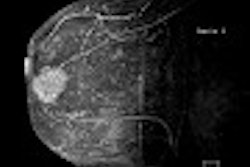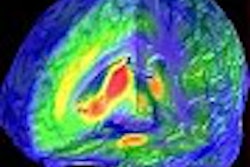Editorial opinion by Dr. Gerald L. Looney, MPH
In the beginning, the earth was without formulas or physicists, and was purely a product of nuclear physics. Today, however, few seem to be aware that the greatest contributions of this reputedly new science are actually ancient history, since they occurred at the beginning of the universe 13.7 billion years ago, remaining unknown and unacknowledged until the past century, when mankind finally discovered this most elemental of all sciences.
Predictably, with its "discovery," nuclear physics was labeled a new science and presumed to be somewhat manmade and under man’s dominion and control. Hasty scientific hypothesis and public dogma held that nuclear phenomena with ionizing radiation were hazardous at any level, and that humans must be shielded and protected from this "new" hazard. The very idea is ironic, since the truth of the matter is that man is a product of nuclear energy, not vice versa. Now, this less familiar, but more accurate reality, will form the basis of discussion.
Later pertinent findings in astrophysics as well as in the medical sciences have been announced piecemeal and as scattered reports to a variety of audiences. As a result they have never grabbed worldwide attention as vividly and singularly as the atomic bombs in World War II, a time when man seemed to claim control of his destiny, for better or worse. Unfortunately, at that point man turned to hasty assumptions based on very limited information, assumptions he has been loath to revise or reject even in the face of refuting data.
While generations of students and scientists have learned about radioactive decay and the half-lives of various radioactive elements and isotopes, virtually no one has turned the telescope around and discussed or documented the reverse view: The same number of half-life years taken back into the past produces a double-life, a doubling of radioactivity for these elements, and an incremental terrestrial background level many times higher than today’s levels.
The Big Bang nearly 14 billion years ago at the formation of the universe transformed energy into matter and produced a profusion of simple hydrogen atoms, which still populate the earth and universe to this day. Along the way, these atoms served as the building blocks of subsequent larger elements, including vital carbon and oxygen.
Nonetheless, 10 billion years passed before the first life forms appeared on earth. Part of this delay was undoubtedly due to the early inhospitality of this planet to the initial generation of life, as well as to the subsequent preservation and propagation of primitive single-cell organisms. However, there was another essential biologic requirement for these early simple organisms: the need to tolerate and adapt to the inherent risk factors of early Earth, such as ionizing radiation, a sort of radiologic imperative necessary for life.
The possibility of such an imperative was never considered by science or society following the new and startling discovery of these mysterious rays, and it was arbitrarily decreed that ionizing radiation is intrinsically dangerous at even the lowest levels. To guard against any risk or hazard, scientists settled on the linear no-threshold (LNT) hypothesis for radiation protection by extrapolating risk data from high-level exposure down through lower levels all the way down to zero exposure -- a level which has never existed on earth except in specially shielded containers with artificial environments.
And this is the biggest surprise and best-kept secret of all: a man isolated in such a chamber and secure from extrinsic background radiation would still experience significant intrinsic irradiation from himself. The human body, rather than being a chaste and inviolate vessel of biologic purity devoid of and unpenetrated by ionizing radiation, is actually its own radioactive repository and beehive of ionizing rays, with an intrinsic level of nearly 9,000 Bq for the average 150-pound human.
At this level, the body is experiencing more than 8,000 disintegrations per second, a million ionizing rays every two minutes, 30 million per hour, and three-quarter billion per day. Thus, if a nuclear power worker and his family were "protected" in some hypothetical shielded environment, he would still receive more ionizing radiation from snuggling next to a sleeping spouse for eight hours than he receives from a full eight-hour shift at work.
This defies the original popular image of the human body as a radiosterile structure, and the resulting widespread assumption that any ionizing ray within this structure represents an isolated disruptive burst of thunder and lightning, which blasts and damages biologic tissue, and leaves a smoldering scar waiting to later burst into a consuming fire of malignant destruction. A more accurate view is that these radioactive rays represent the steady spark of nature’s ignition in a smoothly running biologic engine. Early life on this planet swam in an ocean of ionizing radiation, and this invisible ocean has clearly not disappeared even though it has receded.
The original naive assumption has been that life on this planet was safe and secure from these odorless, tasteless, and invisible radiologic phenomena until they were released from the genie’s bottle by Wilhelm Roentgen, and later tracked by the Curies, as well as many others, using cloud chambers, photographic film, and other detection devices in the past century.
However, facts indicate the exact opposite: Man’s psyche may have been exposed to the reality of ionizing radiation for the first time in 1896, but his soma has been bombarded for eons by retrogressively higher levels of natural background radiation, punctuated by episodes of extraterrestrial radiation from exploding supernovae and occasional hypernovae, as well as evolving solar activity.
According to the LNT hypothesis, such levels should have sterilized the earth and eradicated all life. Instead, radiation may have produced multiple new mutations in existing life forms, with the negative disadvantageous mutations disappearing rapidly, and the positive advantageous mutations prospering and propagating. Indeed, it seems likely that this radiologic imperative was a significant factor in the evolution of all species.
Quickly following in the footsteps of Roentgen, British radiologists/radiotherapists formed the world’s first radiological society and began registering members in 1897, monitoring one of the oldest occupational groups exposed to ionizing radiation. Because they had equipment to generate higher levels of radiation than laboratory researchers utilizing natural ores of radium compounds and pitchblende, these early radiologists received greater exposures (protection was unheard of) and were one of the first groups to recognize skin burns and other negative effects of excessive exposure.
Nearly a quarter-century later in 1921, the first radiological protection standards were published -- standards that were later reviewed and made periodically more stringent for all occupations. The original increase in initial radiologist cancers, which was not manifested for several decades, declined rapidly with protection and decreased exposure. For members registered after 1954, no increase in malignancies could be found and a hint of decreased cancer risk began to be noted.
This hint was quickly forgotten in the furor over the atmospheric testing of atomic bombs, and some scientists launched a crusade against all things which might have radioactive potential, not realizing that they were condemning and rejecting their own species and birthrights. Aided and abetted by the pressures and manipulations of the Cold War, it became politically correct and acceptable for science to practice discrimination and disinformation for this part of the electromagnetic spectrum.
We wrongly assumed that life on earth never knew radioactive sin until man brought it on himself, that zero-exposure was the historical rule, not the exception, and that elimination of future exposure should be the ultimate goal of humanity at home, at work, and eventually in space. Such zeal for a radiation-free environment could lead in the future to actual radiation deficiency, since living organisms depend on low-level exposure to stimulate immune system functioning.
This current zeal for zero-tolerance of radiation is reminiscent of the puritanical efforts of early missionaries visiting South Sea Islands for the first time. Because of their zero-tolerance for alcoholic beverages, these newcomers coerced the natives into giving up their fermented home-brews containing many natural nutrients, which eventually led to deficiency states of several vitamins and minerals. Inadvertently, these missionaries documented the Law of Unintended Consequences -- and helped pave the road to hell with their good intentions.
It has already been documented that nuclear workers with additional low-level exposures (LLE) have statistically significant longer life spans and lower cancer incidences than matched-control workers without the LLE. Our current radiation antipathy and LNT hypothesis would never predict this result, so this unexpected improvement for exposed workers continues to be largely ignored and unacknowledged. An Internet search for "radiation hormesis" produces a wealth of positive information, information that is almost completely lacking in prior and current medical textbooks and physics publications.
If the Search for Extra-Terrestrial Intelligence (SETI) Project is someday successful, and we obtain feedback from an observer on a distant planet, the observations may be rather startling. ET may find our behavior puzzling and humorous, laughing at our fixation on stone tools, iron implements and petroleum products, but perplexed by our abhorrence of the oldest and most universal energy of all, nuclear energy.
This unearthly observer might compare earthlings’ behavior following the recent discovery of nuclear physics with their earlier ancestral discovery of fire. When man’s first encounter with lightning-induced forest fires resulted in the infliction of numerous fatalities and scores of survivors with severe burns and scars, Homo erectus initially feared greatly this frightening new phenomenon and ordered all of his tribe to avoid the flickering flames to prevent future death and disfigurement.
Only subsequent generations were able to overcome this phobia and learn to control this once-fearsome demon for everyone’s comfort and benefit. In this regard and this discussion, let us hope that history can indeed repeat itself and learn from the beginning.
By Dr. Gerald L. Looney, MPHAuntMinnie.com contributing writer
March 21, 2003
Dr. Gerald Looney is a graduate of the Johns Hopkins School of Medicine in Baltimore and the Harvard School of Public Health in Boston. He has held medical faculty positions at Harvard University, Boston University, the University of Arizona in Tucson, and the University of Southern California in Los Angeles. He is currently an associate clinical professor of medicine/occupational medicine at the University of California, Irvine College of Medicine. He recently retired as medical director of Boeing’s military transport division in Long Beach, CA, and currently serves on the Department of Energy’s (DOE) physician review panel to examine cases of workers from earlier nuclear facilities who might have occult work-related illness.
Related Reading
U.S. to evaluate whether x-rays should be labeled carcinogens, February 18, 2003
Studies cast doubt on low-level radiation dangers, January 30, 2003
Worrisome radiation dose seen in CT lung screening, follow-up, December 23, 2002
Limiting PET radiation exposure requires tools, techniques, October 25, 2002
Even moderate doses of radiation may cause nervous system tumors, October 16, 2002
Whole-body CT: Radiology to the people?, October 2, 2002
The opinions expressed in guest editorials are those of the author, and do not necessarily reflect the views of AuntMinnie.com.
Copyright © 2003 AuntMinnie.com



















